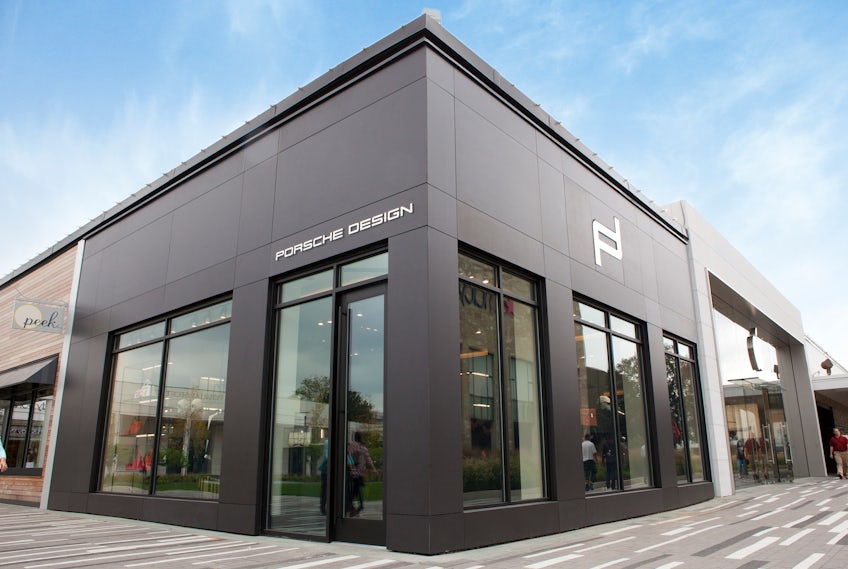Utter the name Porsche and one instantly thinks sleek, sporty, modern, and luxurious — all phrases that sum up all of the products associated with the brand, whether automobiles, watches, or apparel. So, when Eric Styer of DXU Architecture conceptualized a fashion boutique for Porsche Design in an upscale retail development of Oak Brook, Ill., he wanted to create a facade that would both embody the client’s design philosophy and make it stand out from the adjacent storefronts.
“The design concept presented the corner storefront as a stone block with openings carved into it to create a solid/void dynamic across the facade,” describes Styer. “For this purpose, I sought a material that provided a homogenous look.” But the eye-catching facade material also had to perform to high standards. “The storefront is located at a high-traffic corner, and the climate in this region is highly varied from season to season.” His solution? Dekton® — an ultra-compact surfacing product by Cosentino.

Ideal for a protective skin over a building’s structural wall, Dekton can take the brunt of inclement weather and UV rays, boasts freeze/thaw and abrasion resistance, and is highly cleanable. And, because there are no added resins or adhesives, it also retains its color for a building’s lifetime.
This ultra-compact surfacing material is manufactured by a patented process called Particle Sintering Technology (PST) that fuses raw, inorganic materials using extremely high heat temperatures as well as high pressure from a 25,000-ton press. The result is an incredibly dimensionally stable material with near-zero porosity and no micro-defects that typically cause weaknesses in some materials.

“Dekton’s technical properties lend themselves nicely to a number of the specialized techniques that I wanted to execute, such as mitered corners, to achieve the deep reveals and shadows of the facade’s design.”
The architect specified that the material be used in full-sized panels, which measure 56-inches by 126-inches — a format large enough to help minimize the number of visible joints — and in the stark Sirius color finish, forming a seamless, slick, and sophisticated look that’s compatible with the Porsche Design identity. The 12-millimeter-thick panels were installed as a rain screen using a railing system. In keeping the Dekton skin independent of the building’s structural system, this design allows water and air to circulate between the two.
Tight cutouts in the panels closely accommodate the acrylic Porsche Design lettering and logo, giving the appearance that they’re emerging from the facade — or even floating midair — while creating clean, crisp signage for when they’re illuminated at night. “The desired aesthetic of this project could not have been achieved without the use, and unmatched characteristics, of Dekton.”

Although Styer opted for an edgy, dark color befitting his client’s brand, Dekton is offered in a wide selection of hues and finishes, from rust and wood-grain to natural stone and concrete. The non-combustible, natural-looking material is also produced in three standard thicknesses — 8-, 12-, and 20-millimeter — and can additionally be installed as part of a curtain wall or thin-set direct to the wall. With this versatile, high-performance material that comes in a range of styles, the design possibilities are endless.




